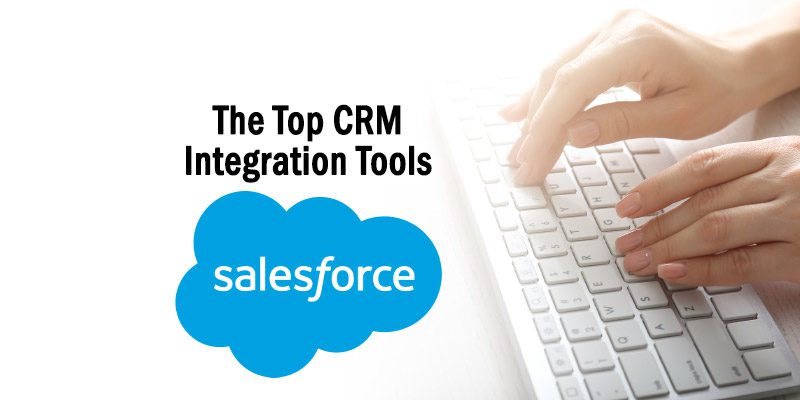"Connecting the Dots: Salesforce Integration with Various Systems"
 SalesforceSherpa
SalesforceSherpa
Learn how to integrate Salesforce with third-party apps and streamline your business operations. Read our guide for tips and best practices.
Salesforce integration doesn't have to be complicated. Our guide to integration tools and methods can help small businesses simplify their processes.
Simplify your CRM by integrating Salesforce with other business apps. Our guide covers everything from APIs to data mapping and authentication.
Improve the accuracy of your Salesforce data with our best practices for data mapping and transformation in Salesforce integration.
Looking to streamline your business operations? Salesforce integration can help. Read our guide for tips on setting up and maintaining your integration.
I. Introduction
Salesforce is a powerful CRM tool that can help businesses manage their customer relationships and sales processes. However, integrating Salesforce with other business apps can be a challenge. This guide will provide an overview of Salesforce integration and offer tips and best practices for setting up and maintaining your integration.
II. Why Integrate Salesforce?
Integrating Salesforce with other business apps can help streamline your business operations and improve data accuracy. By integrating Salesforce with other tools, you can:
Automate data entry and reduce manual data entry errors
Improve communication and collaboration across teams
Gain better insights into your sales and customer data
Enhance the overall customer experience

III. Preparing for Salesforce Integration
Before you start integrating Salesforce with other tools, there are several steps you should take to prepare:
A. Understanding Your Business Requirements
To ensure a successful Salesforce integration, you need to understand your business requirements. This includes identifying the data you need to integrate, the workflows you want to automate, and the business processes you want to improve.
B. Defining Integration Scope and Objectives
Once you understand your business requirements, you need to define the scope and objectives of your integration project. This includes identifying the systems and apps you want to integrate with Salesforce and setting goals for your integration.
C. Choosing Integration Tools and Methods
There are several tools and methods you can use to integrate Salesforce with other business apps. The best tools and methods for your integration project will depend on your specific business requirements and objectives.
IV. Steps to Salesforce Integration
Once you have prepared for your Salesforce integration, you can start the actual integration process. Here are the key steps to follow:
A. Setting Up Salesforce and Third-Party Apps
Before you can start integrating Salesforce with third-party apps, you need to ensure that both Salesforce and the third-party apps are set up properly. Here's what you need to do:
Create a Salesforce Account
If you haven't already, create a Salesforce account and purchase the appropriate licenses for your team.
Choose Your Third-Party Apps
Identify the third-party apps you want to integrate with Salesforce. Some popular options include QuickBooks, HubSpot, and Mailchimp.
Install the Third-Party Apps
Install the third-party apps you have chosen and configure them according to your business requirements.
Set Up Custom Fields
To ensure that data is mapped correctly between Salesforce and your third-party apps, you may need to set up custom fields in Salesforce.
B. Configuring APIs and Authentication
To integrate Salesforce with third-party apps, you need to configure APIs and authentication. Here's how:
Enable API Access in Salesforce
To enable API access in Salesforce, go to Setup > Security > API Access and check the box next to "Enable API Access".
Obtain API Credentials from Third-Party Apps
To integrate with third-party apps, you need to obtain API credentials from each app. This typically involves generating an API key and secret.
Configure Authentication Settings in Salesforce
Configure authentication settings in Salesforce by going to Setup > Security > Remote Site Settings and adding the URLs for each third-party app.
Test API Connections
Before proceeding, test the API connections between Salesforce and your third-party apps to ensure that they are functioning properly.

C. Mapping and Transforming Data
Once you have configured APIs and authentication, you need to map and transform data between Salesforce and your third-party apps. Here's how:
Identify Data to Be Mapped
Identify the data that needs to be mapped between Salesforce and each third-party app. This may include customer contact information, sales data, or product information.
Map Data Fields
Map data fields between Salesforce and each third-party app. This involves identifying which fields in Salesforce correspond to which fields in each app.
Transform Data as Needed
If data needs to be transformed in order to be mapped properly, use data transformation tools to format data correctly.
D. Testing and Validating Integration
Before launching your Salesforce integration, you need to test and validate it to ensure that it is functioning properly. Here's how:
Run Test Integrations
Run test integrations to ensure that data is being mapped and transformed correctly between Salesforce and your third-party apps.
Check for Errors
Check for errors in the integration process and troubleshoot as needed.
Validate Data Accuracy
Validate that data is being accurately mapped and transformed between Salesforce and your third-party apps.
E. Launching and Maintaining Integration
Once you have tested and validated your Salesforce integration, you can launch it and start using it in your daily operations. Here's how to maintain your integration over time:
Monitor for Errors and Issues
Regularly monitor your Salesforce integration for errors and issues, and address them promptly.
Update Integration as Needed
Update your Salesforce integration as your business requirements change or as new third-party apps are added.
Train Your Team
Train your team on how to use your Salesforce integration effectively, and ensure that they understand the benefits of using it.

V. Benefits of Salesforce Integration
Integrating Salesforce with third-party apps can provide a number of benefits to your business, including:
Improved data accuracy
Increased productivity
Enhanced customer experience
Streamlined business operations
Better insights into sales and customer data
VI. Conclusion
Salesforce integration can be a powerful tool for streamlining your business operations and improving data accuracy. By setting up Salesforce and third-party apps correctly, configuring APIs and authentication, mapping and transforming data, and testing and validating your integration, you can reap the benefits of improved data accuracy, increased productivity, enhanced customer experience, streamlined business operations, and better insights into sales and customer data. With proper maintenance and training for your team, Salesforce integration can become an essential part of your daily operations and help drive business success.
Subscribe to my newsletter
Read articles from SalesforceSherpa directly inside your inbox. Subscribe to the newsletter, and don't miss out.
Written by
